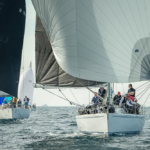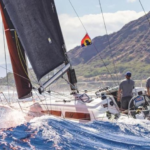Two hulls or one? It’s a debate that’s existed since the Polynesians first started exploring the Pacific Ocean in catamarans. Nowadays, our catamarans are much more refined. They can be powered both by sails or by diesel, but in this article we’ll only be comparing motor cats to other monohulled motor yachts, as sailing a catamaran is a completely different game.
First, the obvious difference is in the shape. A catamaran is wider and boxier than a monohull yacht, and this difference comes with tradeoffs and benefits. The catamaran’s double hull design gives it greater stability both underway and while docked or moored. A catamaran is also much more fuel efficient on average than a monohull, due to the decreased amount of drag on it’s much slimmer hulls. However, monohull yachts are capable of handling larger, more powerful engines, and thus usually have a considerably higher top and cruising speed than catamarans.
As for living space, it depends on which areas of the boat are most important to you. The wider catamaran allows for a more spacious salon, galley, and flybridge than all but the largest of monohull yachts. However, the cabins in a catamaran are located in the hulls, which are slim. This usually results in the overwhelming majority of the space in the cabins being taken up by the berth, leaving little room for in-cabin storage. In a monohull yacht, there are many more possible layouts for the V-berth, aft cabin, or guest cabins, and they are usually much more roomy.
Finally, it’s necessary to consider where you’ll be keeping your yacht, catamaran or not. With a monohull, you can fit into many more slips in many more marinas. With a catamaran, especially a larger one, you’ll probably want to search out and end or side tie slip. These, of course, are less common than a normal slip.
There is a different definition of “the best boat” for everyone. It’s impossible to say definitively whether or not a motor cat or a deep-V monohulled yacht is better, but it’s easy to decide which one best fits your needs when you have a list of their major differences at hand. We hope this article cleared up these differences, and, as always, happy yachting!





